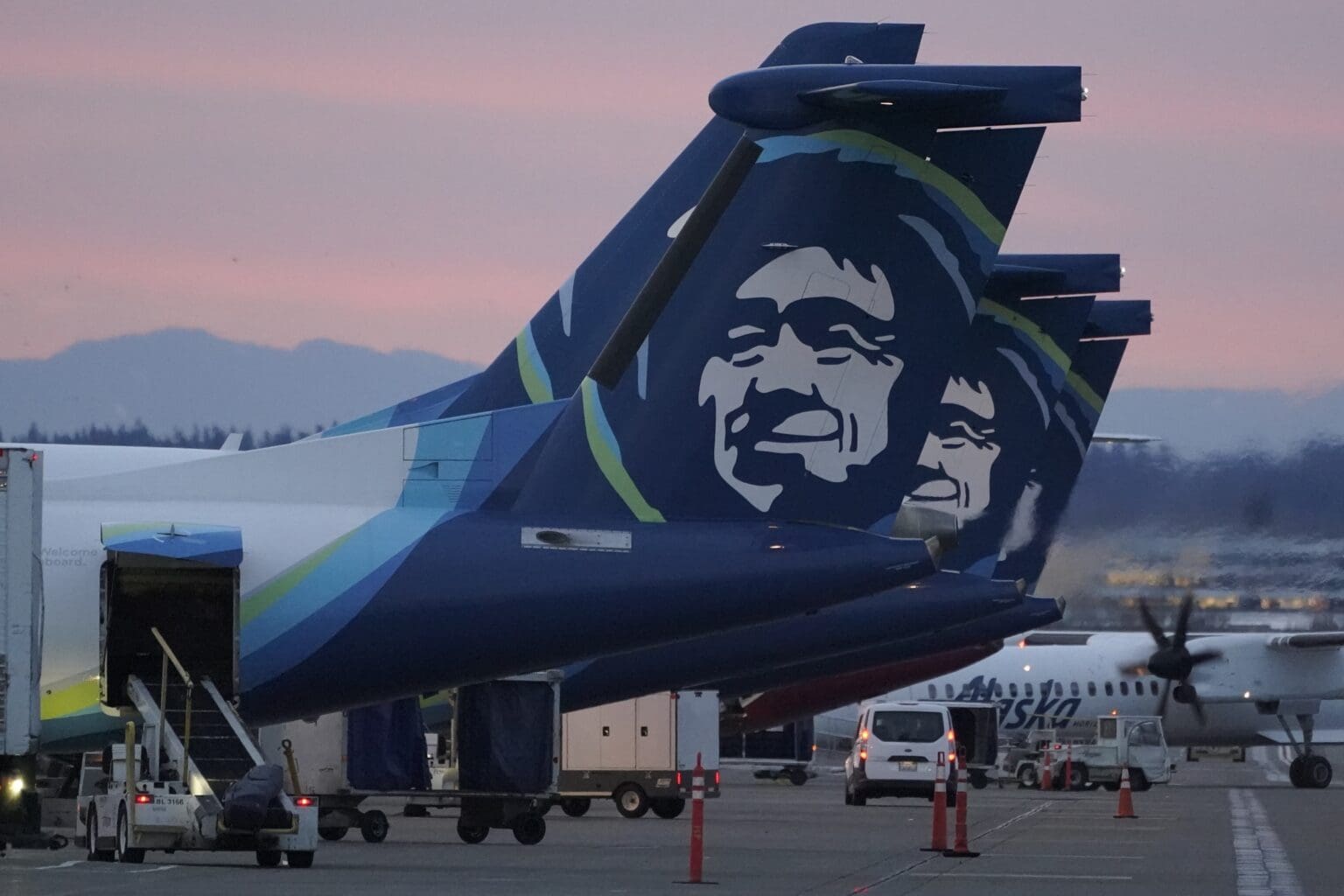Federal officials on Saturday ordered the immediate grounding of Boeing 737 Max 9 jetliners until they are inspected after an Alaska Airlines plane suffered a blowout that left a gaping hole in the side of the fuselage.
The required inspections will take around four to eight hours per aircraft and will affect about 171 airplanes worldwide.
An Alaska Airlines jetliner blew out a window and a portion of its fuselage shortly after takeoff three miles above Oregon late Friday, creating a gaping hole that forced the pilots to make an emergency landing as its 174 passengers and six crew members donned oxygen masks.
No one was seriously hurt as the depressurized plane returned safely to Portland International Airport about 20 minutes after it had departed, but the airline grounded its 65 Boeing 737 Max 9 aircraft until they can be inspected. The National Transportation Safety Board said Saturday it will also investigate.
Passenger Evan Smith said a boy and his mother were sitting in the row where the window blew out and the child’s shirt was sucked off him and out of the plane.
“You heard a big loud bang to the left rear. A whooshing sound and all the oxygen masks deployed instantly and everyone got those on,” Smith told KATU-TV.
Alaska Airlines CEO Ben Minicucci said the inspection of the company 737-9 fleet aircraft could take days to complete. They make up a fifth of the company’s 314 planes. It wasn’t immediately known Saturday how that would affect the company’s flight schedule.
“We are working with Boeing and regulators to understand what occurred … and will share updates as more information is available,” Minicucci said. “My heart goes out to those who were on this flight – I am so sorry for what you experienced.”
The Port of Portland, which operates the airport, told KPTV that the fire department treated minor injuries at the scene. One person was taken for more treatment, but wasn’t seriously hurt.
Flight 1282 had taken off from Portland at 5:07 p.m. Friday for a two-hour flight to Ontario, California. About six minutes later, the window and a chunk of the fuselage blew out as the plane was at about 16,000 feet (4.8 kilometers). One of the pilots declared an emergency and asked for clearance to descend to 10,000 feet (3 kilometers), the altitude where the air would have enough oxygen to breathe safely.
‘We need to turn back to Portland,” the pilot told controllers in a calm voice that she maintained throughout the landing process.
Videos posted by passengers online showed a gaping hole where the window had been and passengers wearing their masks. They applauded when the plane landed safely about 13 minutes after the window blew out. Firefighters then came down the aisle, asking passengers to remain in their seats as they treated the injured.
The aircraft involved rolled off the assembly line and received its certification just two months ago, according to online FAA records. The plane had been on 145 flights since entering commercial service on Nov. 11, said FlightRadar24, another tracking service. The flight from Portland was the aircraft’s third of the day.
The Max is the newest version of Boeing’s venerable 737, a twin-engine, single-aisle plane frequently used on U.S. domestic flights. The plane went into service in May 2017.
The union representing flight attendants at 19 airlines, including Alaska Airlines, commended the crew for keeping passengers safe.
“Flight Attendants are trained for emergencies and we work every flight for aviation safety first and foremost,” the Association of Flight Attendants said in a statement Saturday.
Two Max 8 jets crashed in 2018 and 2019, killing 346 people and leading to a near two-year worldwide grounding of all Max 8 and Max 9 planes. The planes returned to service only after Boeing made changes to an automated flight control system implicated in the crashes.
Last year, the FAA told pilots to limit use of an anti-ice system on the Max in dry conditions because of concern that inlets around the engines could overheat and break away, possibly striking the plane.
Max deliveries have been interrupted at times to fix manufacturing flaws. The company told airlines in December to inspect the planes for a possible loose bolt in the rudder-control system.
___
Associated Press reporter Terry Spencer in Fort Lauderdale, Florida, contributed to this report. Koenig reported from Dallas.




